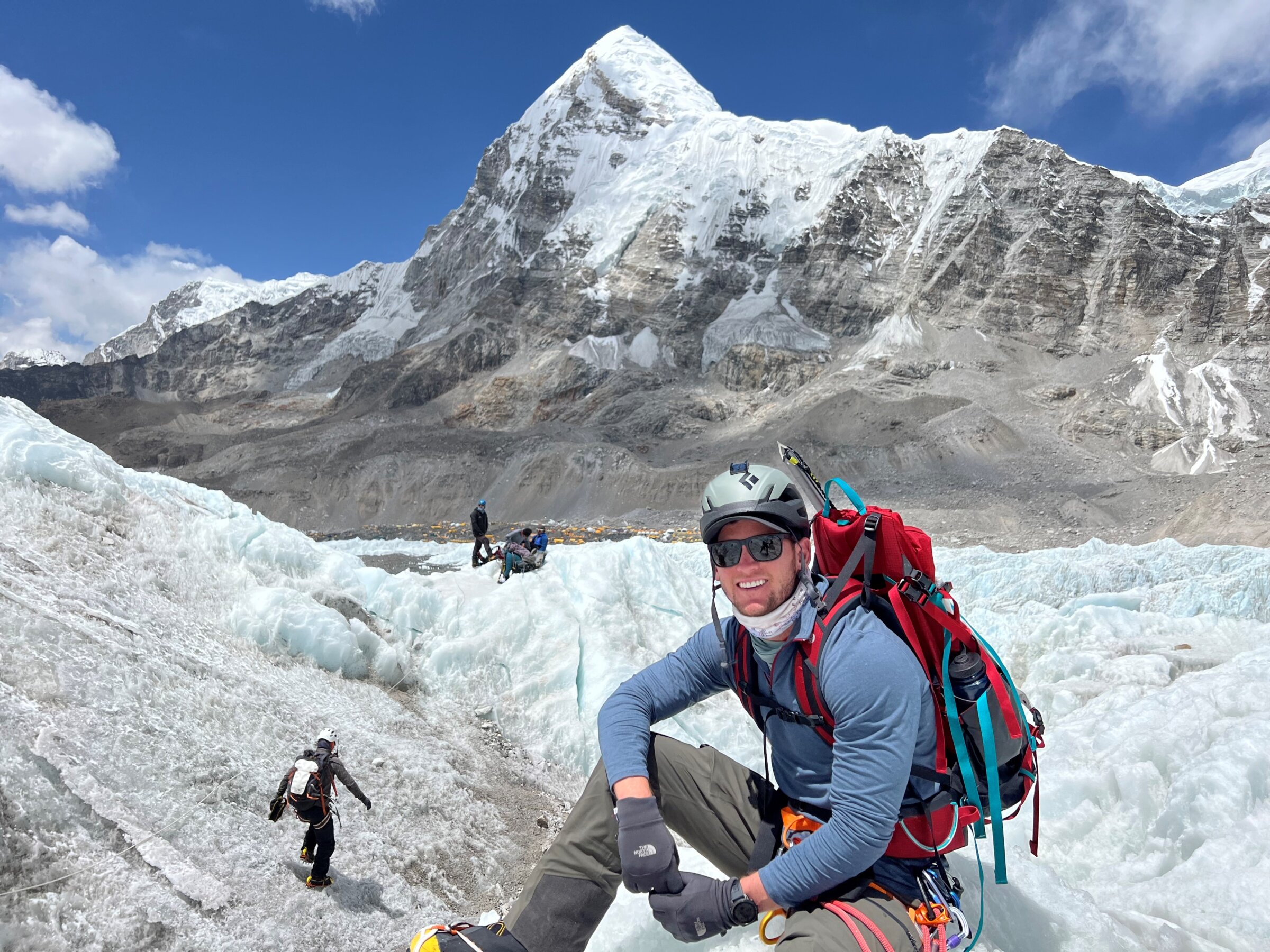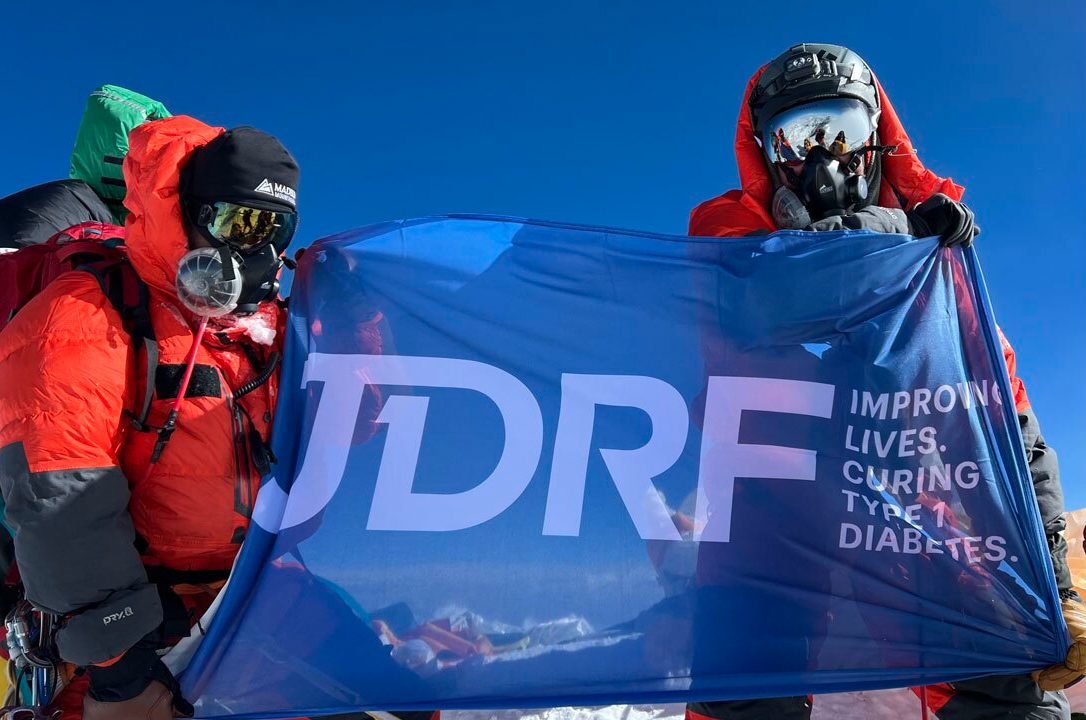Oh, the holiday season is upon us! The lights, the songs, the gifts, the food…and the stress.
It can make this time of the year a little tricky for those of us with type 1 diabetes (T1D). Can you enjoy the holiday treats and festive meals? Of course! Can you surround yourself with the hustle and bustle of the season? Definitely! But managing your blood sugar will take more work, including a bit more planning ahead and a bit more adjusting.
Here are a few tips to help you celebrate the holidays to the fullest, plus a recipe for a sweet treat from a Breakthrough T1D community member!
Get moving (and keep moving) to boost insulin sensitivity
Winter is no time to start sinking into the couch cushions! Daily exercise is one of the best tools for fighting rising blood sugars and insulin resistance during the holidays.
That daily walk can significantly boost your sensitivity to insulin and support your blood sugar goals. In other words, it can help insulin work better in your body! But you’ve got to be consistent—make it a daily part of your life.
It doesn’t have to be intense. Walking twice a day for 30 minutes is an excellent place to start. If that becomes your daily exercise routine, that’s a bonus. Even putting up the holiday lights can be a good workout!
If you’re interested in adding a little bit of strength training, it can be simple. Grab a pair of 8- or 12-pound dumbbells and do a set of standing shoulder presses, bent-over rows, or squats.
If you live in a very chilly place, grab your cold weather gear and get outside. Every day.
Learn more about exercise and T1D.
Plan ahead with lighter meals before the bigger holiday meals
You know there will be a wide range of indulgent, delicious, seasonal dishes and desserts at holiday gatherings. Just because you have T1D doesn’t mean you can take part in the tasty celebration—but you can plan ahead by eating lighter for the first part of the day.
Stick to whole-food, lighter meals at breakfast and lunch to make room for your holiday dinner. For example:
- Breakfast: egg and vegetable sauté
- Lunch: apple and salted nuts
- Snack: carrots and hummus
- Dinner: the holiday party!
This will also make blood sugar management easier for the first big chunk of the day. Managing your blood sugar with T1D is hard enough—set yourself up for success during the holidays by keeping some of the day’s meals light and easy!
Our Thanksgiving holiday guide has more helpful tips to make the holiday easier, including carb counts for foods and drinks!
Know the effects of alcohol on T1D
Eggnog and champagne toasts are often part of holiday festivities. Learning how to consume alcohol carefully and safely with type 1 diabetes is important so you can enjoy yourself without risking hypoglycemia later on.
Learn more about alcohol and type 1 diabetes.
Keep stress in check
The holidays can cause a lot of anxiety. T1D also never stops, and this comes with its own challenges. Stress of any kind can impact your blood sugar, causing unexpected highs or lows.
Focus on managing your stress this time of year. Exercise, eating a balanced diet, and getting enough sleep are all great ways to reduce stress.
It’s also a good time of year to find and embrace what you are grateful for. Whether it’s books, music, food, family and friends, pets, or nature, surround yourself with what brings your soul joy!
If you find that you are having difficulty managing stress, don’t be afraid to ask for help. Visit our Mental Health Guide for more information and support.
‘Tis the Season!
Navigating the holidays with type 1 diabetes isn’t always easy, but if you approach it with thoughtful intentions, you can enjoy it all!

Charlie’s Chocolate Chip Banana Bread Muffins
Donna Lynne Champlin’s son Charlie was diagnosed with T1D in 2020, at age 9. Donna’s family used this recipe for Chocolate Chip Banana Bread Muffins to teach Charlie how to bake and, inspired by kids’ baking shows, he’s spent years perfecting it! He came up with the idea of making banana bread muffins instead of a loaf to keep portion sizes consistent and make bolusing easier.
Prep time: 10 minutes
Cook time: 25 minutes
Servings: 12 muffins
Carb Count: 1 muffin = 45g carbs
Ingredients:
- 3 – 4 ripe bananas, smashed (52g carbs = 4 bananas)
- 1/3 cup melted butter (1g carb)
- 1 cup sugar (200g carbs)
- 1 egg, beaten (1g carb)
- 1 teaspoon vanilla (1g carb)
- 1 teaspoon baking soda (0g carbs)
- Pinch of salt (0g carbs)
- 1 ½ cups of all-purpose flour (142g carbs)
- 1 cup dark chocolate chips (144g carbs)
Instructions:
Preheat the oven to 350°F (175°C). With a wooden spoon (or your hands) mash bananas and mix with melted butter in a large mixing bowl. Mix in the sugar, egg, and vanilla. Sprinkle the baking soda & salt. Mix in flour. Fold in ¾ of the chocolate chips. Pour batter into a 12-cup muffin pan. Sprinkle the rest of chips on top of the muffins. Bake for 25 minutes.
*To make the bread loaf instead of muffins, just use a loaf pan and bake for an hour.
Paola Reynoso is a Development Assistant for Breakthrough T1D’s Northern California chapter. She has been integral in bringing together the Spanish-speaking type 1 diabetes (T1D) community. She hosts a Spanish-speaking E-Meet & Greet as well as a Facebook Group for Spanish Speakers. Paola also partnered with Breakthrough T1D’s national Culture and Belonging team to create a Spanish Bag of Hope for newly diagnosed families.
Paola is inspired by her son, Damian, who was diagnosed with T1D at the age of three. She recently released her first book, Damian: Living With Type 1 Diabetes, available in English and Spanish, to help educate newly diagnosed children and their families.
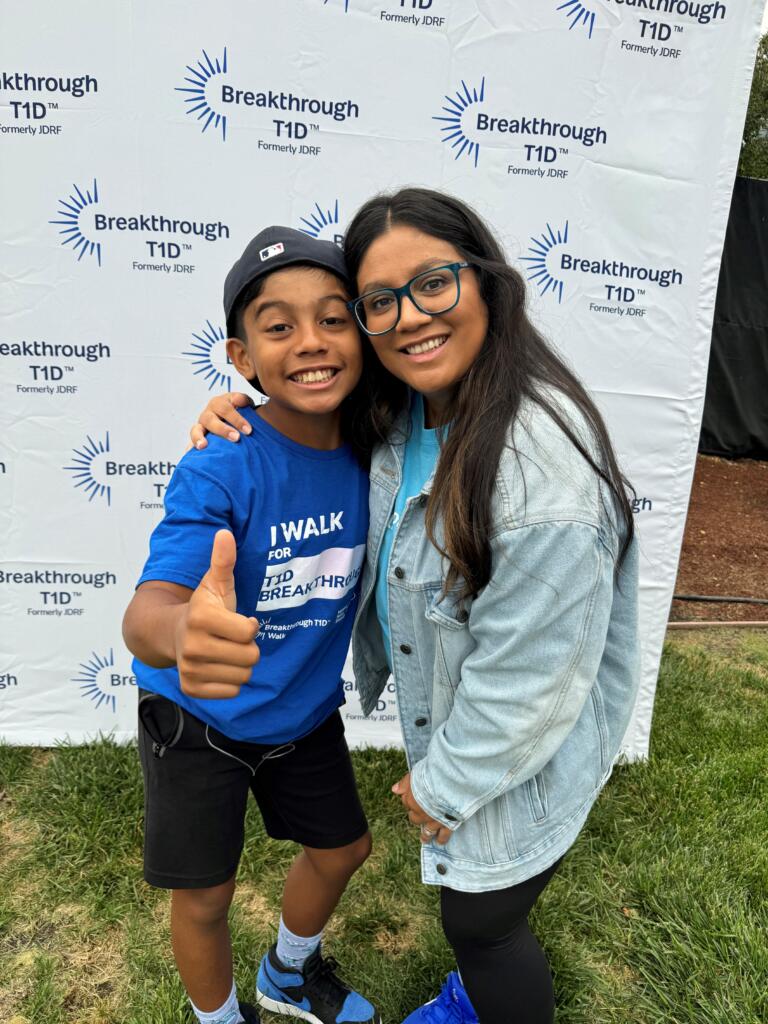
To be that person that people come to for support is reassurance that I’m where I’m meant to be.”
Widespread awareness brings us closer to advancing breakthroughs to cure, prevent, and treat type 1 diabetes (T1D) until it is a condition of the past. Visit our Diabetes Awareness Month page to learn more about how you can get involved.
The Cincinnati Bengals’ Orlando Brown, Jr. is a Breakthrough T1D Ambassador and Advocate. Orlando’s commitment to type 1 diabetes (T1D) advocacy stems from his family’s journey with the disease. It began with his grandmother’s diagnosis of T1D, followed by the devastating loss of his father, NFL player Orlando Brown, Sr., to diabetic ketoacidosis, a serious diabetes complication. His younger brother’s T1D diagnosis at just 11 years old fueled Orlando’s determination to advocate for more research, more education, and wider access to diabetes technologies and therapies that make life easier and safer for the more than 1.6 million Americans living with T1D.
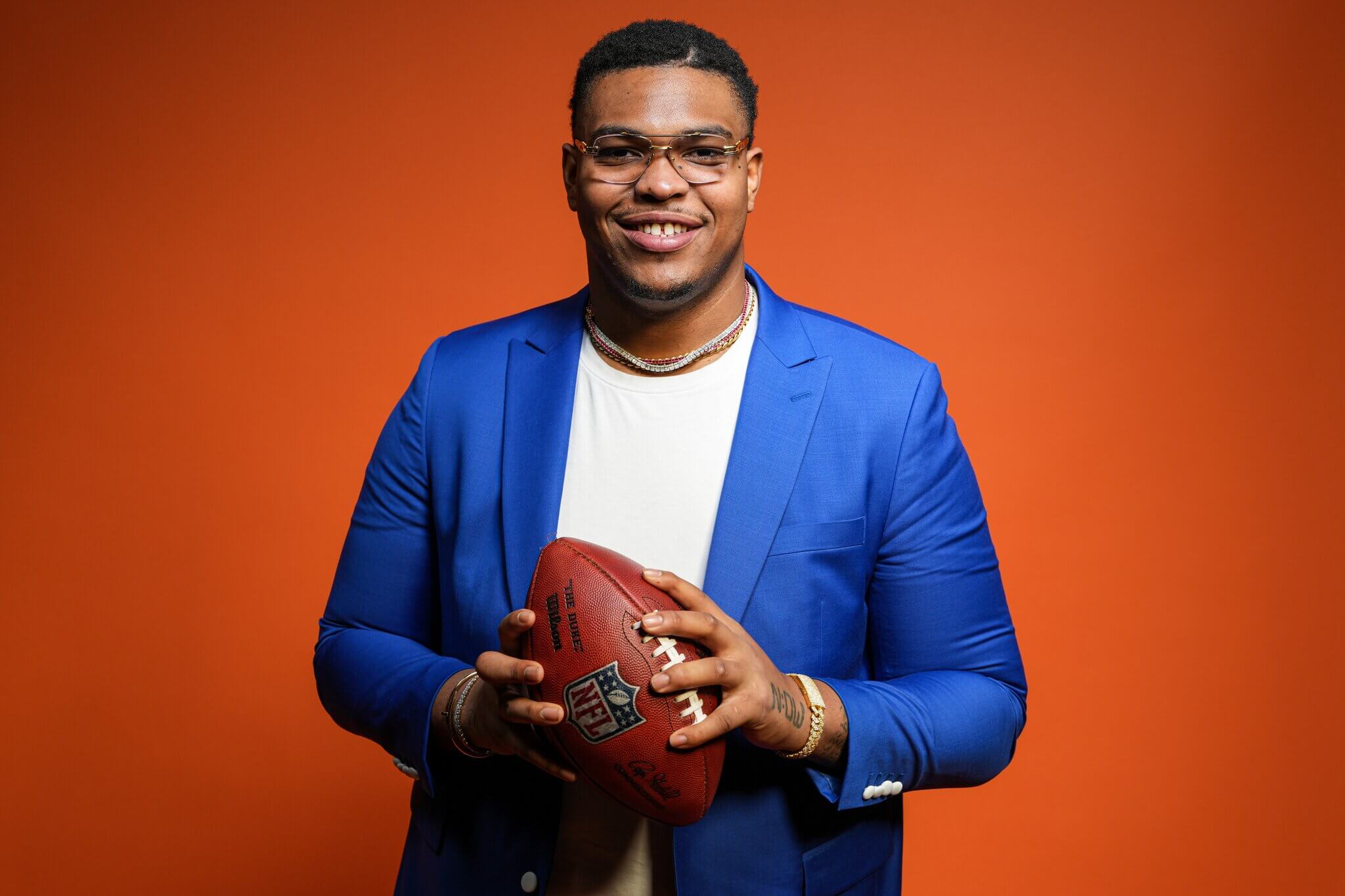
Knowledge is power, and I’m sharing my family’s story to educate and inspire others who are living with type 1 diabetes.”
Widespread awareness brings us closer to advancing breakthroughs to cure, prevent, and treat type 1 diabetes (T1D) until it is a condition of the past. Visit our Diabetes Awareness Month page to learn more about how you can get involved.
Op-ed by Breakthrough T1D Chief Global Advocacy Officer Lynn Starr
In my role as Chief Global Advocacy Officer, I lead an incredibly talented and dedicated team based in Washington, D.C., to support our mission—accelerating life-changing breakthroughs to cure, prevent, and better treat type 1 diabetes (T1D) and its complications.
The Advocacy team has many functions, all in pursuit of driving our mission progress forward faster. Some examples:
- We work with regulatory agencies around the world to establish roadmaps for approvals of advanced therapies.
- We advocate for insulin affordability so anyone who needs it can access the lifesaving medication they need at a reasonable, predictable price.
- We work with insurance payers to ensure there’s coverage for treatments.
- We push for government funding for T1D research.
The team works tirelessly in pursuit of our mission—a mission that’s deeply personal to me. I’ve lived with T1D for 36 years, and my daughter was diagnosed just last year. I’ve personally benefited from the relentless work of this organization, and it’s amazing that we’ve come so far. From automated insulin delivery systems to continuous glucose monitors, the daily management of this disease today would be unrecognizable to me 36 years ago. These advances have made my life, my daughter’s life, and the lives of so many in our community so much better. But the work is not done! Life with T1D remains extremely challenging and requires constant attention and vigilance.
We know this at Breakthrough T1D, and we’re dedicated to pushing further and speeding life-changing breakthroughs. We have many tools in our toolbox as we do this work. One of our power tools is the voice of our grassroots volunteer army of advocates. They are determined champions of our cause. Our grassroots advocates amplify our policy positions on a wide range of issues. In particular, this community voice in support of U.S. government funding for T1D research through the Special Diabetes Program (SDP) has been critical.
The SDP is the U.S. Federal program created in 1997 to fund T1D research through the National Institutes of Health. It’s currently funded at $160 million annually and has contributed nearly $3.5 billion (!) to T1D research since its creation. Breakthrough T1D funds significant amounts towards T1D research ($2.5 billion to date), but we can’t do this alone. We need the SDP funding, too.
The SDP funding has had a direct hand in so many T1D advances, such as automated insulin delivery systems and the first disease-modifying therapy to delay T1D onset. These simply would not have happened without the SDP. And, with the promise of cell therapies, increased research funding is crucial.
The SDP is set to expire at the end of the year. We cannot let that happen! We’re working hard to push forward not just for an extension of the SDP, but also an increase in its funding.
Can you join our advocacy army and help us power forward? It’s incredibly simple: sign up to be an advocate and take action when we email you to ask. Just look for emails from Breakthrough T1D and click through to our action alert, where you’ll be asked to contact your Members of Congress urging support for the SDP.
That’s it—it’s really that easy. It’s also that important.
I’m honored to lead Breakthrough T1D’s advocacy efforts on behalf of the T1D community, and I am so thankful for all the support we’ve received to help drive our mission forward. Especially during National Diabetes Awareness Month, let’s make sure all our voices are heard!
In it to end it,
Lynn Starr
Chief Global Advocacy Officer
Alecia Wesner has been part of the Breakthrough T1D family since her diagnosis with type 1 diabetes (T1D) in Philadelphia in 1979. She has participated in Walks and Rides and served on her Community Board in New York City.
Since 2014, Alecia has participated in numerous T1D clinical trials, many of which were early artificial pancreas system trials. She has also participated in an implantable CGM clinical trial, a complication prevention trial, and numerous studies addressing the psychological and sociological impact of living with T1D.
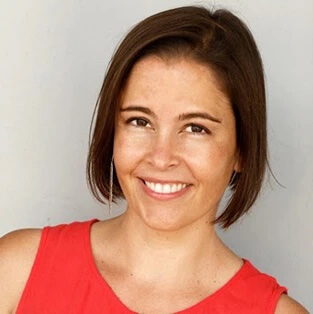
Clinical trials are so empowering. Participating is a great way to contribute to science and also learn.”
Widespread awareness brings us closer to advancing breakthroughs to cure, prevent, and treat type 1 diabetes (T1D) until it is a condition of the past. Visit our Diabetes Awareness Month page to learn more about how you can get involved.
Liz Walsh has been living with type 1 diabetes (T1D) for 33 years. The research and access work supported by Breakthrough T1D has allowed her to live a life she did not think was possible at the time of her diagnosis. T1D technology, such as the insulin pump and continuous glucose monitor (CGM), has empowered her to live more confidently and courageously, including navigating pregnancy with T1D.
Liz’s son, Julian, is her proudest accomplishment. Thanks to advancements in T1D treatment and care, she had a complication-free pregnancy, went full-term, and both she and Julian were healthy the entire time.
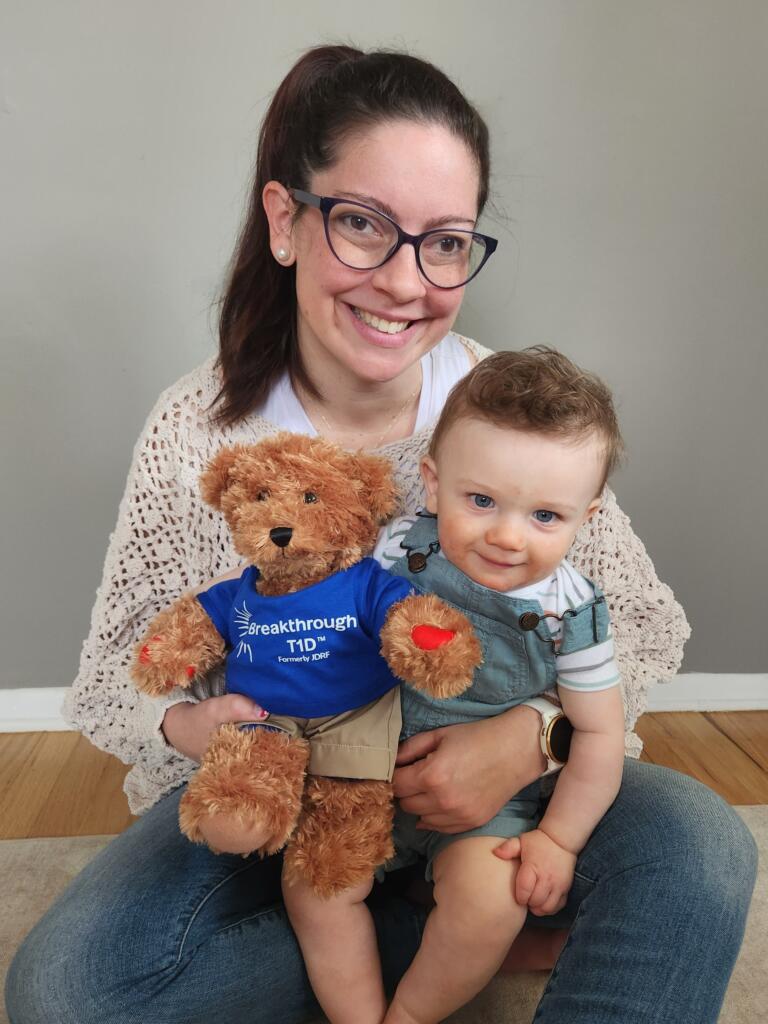
My hope is that we can create a world where no child or parent has to experience life with type 1 diabetes.”
Widespread awareness brings us closer to advancing breakthroughs to cure, prevent, and treat type 1 diabetes (T1D) until it is a condition of the past. Visit our Diabetes Awareness Month page to learn more about how you can get involved.
Type 1 diabetes (T1D) is often a misunderstood condition. For Diabetes Awareness Month, we’re taking a look at some of the most common misconceptions about T1D and setting the record straight!
Aren’t type 1 diabetes and type 2 diabetes basically the same thing?
Though they share some similarities, type 1 diabetes and type 1 diabetes have different causes, effects, and treatments.
Type 1 diabetes is an autoimmune condition that is not preventable. In T1D, the body destroys the cells that produce insulin, a hormone everyone needs to get energy from food. T1D is the less common form of diabetes.
Type 2 diabetes is a metabolic disease in which the body makes insulin but does not use it properly. T2D is the most common type of diabetes.
Learn About The Differences Between Type 1 Diabetes And Type 2 Diabetes.
I read that cinnamon can cure type 1 diabetes. Have you tried that?
There is currently no cure for type 1 diabetes. The only treatment for T1D is insulin. Adjunctive therapies can also be used alongside insulin to achieve glucose control. (Hint: it’s not cinnamon.)
Learn About Type 1 Diabetes Treatments.
Having type 1 diabetes isn’t that hard; all you have to do is give yourself an insulin shot sometimes!
Managing type 1 diabetes is more than an insulin shot! While administering insulin is a crucial part of T1D, there are more daily steps people with T1D must take to stay healthy.
People with T1D need to check their blood sugar frequently during the day and overnight. This can be done with a continuous glucose monitor (CGM) or glucometer. If blood-sugar levels are high, insulin is usually administered. If blood-sugar levels are low, fast-acting glucose is usually ingested.
Learn About Checking Blood Sugar.
Counting carbohydrates is also a necessary part of T1D management. When you have type 1 diabetes, it’s important to know how many carbs you consume each time you eat or drink. This is so you can determine how much insulin you need to take at any given time to control your blood-sugar levels.
Learn About Counting Carbs.
Finally, administering insulin is necessary for people living with T1D. It can be done through injection, inhaler, or pump.
Learn About Administering Insulin.
How did your child get type 1 diabetes? They eat healthy and aren’t overweight!
Type 1 diabetes is an autoimmune disease and cannot be prevented. A type 1 diabetes diagnosis is not influenced by factors such as lifestyle, activity level, socioeconomic status, or habits.
While we are still funding research to determine the exact causes of T1D, we know a few factors are at play, including genes and family history, environmental triggers, and immune response.
Learn About The Causes Of Type 1 Diabetes.
You still have type 1 diabetes as an adult? I thought it was juvenile diabetes.
The condition that was once called “juvenile diabetes” is now medically known as type 1 diabetes because it impacts all ages and stages of life. In fact, more than 50% of new T1D diagnoses are in people over the age of 20.
Learn About The Prevalence of Type 1 Diabetes.
I thought a cure was only five years away.
Our purpose is clear: As we drive toward curing type 1 diabetes, we help make everyday life better for the people who face it. Breakthrough T1D invests in the most promising research to advance treatments, influence policy, and improve access to care for those all over the world who need it.
We’re closer than ever to cures for T1D. Giant leaps are happening nearly every day, from advanced technologies and early detection to cell therapies and disease-modifying therapies. We won’t stop until this condition is a thing of the past.
Learn About Our Research For Type 1 Diabetes Cures.
If you stop eating carbs, you’ll be healthier.
There’s no such thing as a diet all people with type 1 diabetes should follow. In reality, people with T1D can eat anything with the right amounts of insulin. But just like those without diabetes, eating a balanced diet full of whole foods is one of the most important things you can do for your health.
People living with T1D eat a variety of diets that they feel work best for them, including low carb. Speak with your doctor if you have questions or concerns about your diet.
Learn About Food And Nutrition With Type 1 Diabetes.
Breakthrough T1D wrapped up our 2023 TypeOneNation Virtual Summit series with T1D Across the Globe. The event, hosted by sports broadcast TV journalist Jordan Ligons Robinson, featured leading voices from the type 1 diabetes (T1D) community talking about the exciting progress happening all over the world.
The New World of Type 1 Diabetes
Dr. Jeremy Pettus is an endocrinologist and associate clinical professor of medicine at the University of California, San Diego, and Director of Type 1 Diabetes Track at Taking Control of Your Diabetes (TCOYD).
Dr. Pettus acknowledged that while the “struggle is real” with T1D, there have also been a lot of very positive advancements in recent years that make life with T1D easier and healthier:
- T1D technology is booming. This means better diabetes control and less mental burden.
- There are newer insulins and new forms of glucagon that are more effective and easier to use.
- Other medications are now being explored to help improve blood glucose control.
- We have our first-ever approved drug, Tzield, to delay the onset of T1D.
Dr. Pettus is extremely optimistic about the future. “People with T1D are now living longer than people without diabetes because we’re so in tune with our health,” he said. “It really is an amazing day to have type 1 diabetes.”
Updates from Our CEO
Breakthrough T1D CEO Aaron J. Kowalski, Ph.D., discussed the importance of research and advocacy in developing advanced therapies and cures for T1D.
Cell therapies and disease-modifying therapies are two of the most promising approaches to curing type 1 diabetes. Breakthrough T1D has been supporting both for decades and there have been exciting advances recently:
- Lantidra is the first-ever FDA-approved cell therapy for adults with T1D who experience severe hypoglycemia.
- In Vertex’s VX-880 clinical trial, two people have been able to completely stop taking insulin, and all participants are making their own insulin again.
- In Sernova’s clinical trial, five people achieved insulin independence.
- Tzield is the first-ever FDA-approved disease-modifying therapy for T1D, delaying the onset of T1D for nearly three years in at-risk individuals.
- The CLVer study showed that Verapamil, a generic blood pressure medication, can preserve beta cell health in newly diagnosed individuals.
But if you don’t have access to these therapies and treatments, you don’t benefit from the research. That’s where Breakthrough T1D Advocacy comes into play. We’ve made some important wins recently:
- Medicare enrollees now have a monthly $35 out-of-pocket insulin price, and we’re fighting to extend that to other populations.
- We helped launch the Civica insulin project, which will manufacture biosimilar insulin that will cost $30 a vial.
- Our advocacy efforts have fundamentally changed the market in the U.S.: Lily, Novo Nordisk, and Sanofi all reduced the costs of their insulins.
But gaps to access remain. Breakthrough T1D is working to ensure that all advances are available to all people with T1D, no matter who they are or where they live.
“Continue to use your powerful voices to drive change, to drive funding, to drive insulin affordability, to drive access, and to help us make cures a reality for the entire type 1 diabetes community,” Dr. Kowalski said.
Research Updates from Breakthrough T1D’s International Affiliates
Breakthrough T1D’s vision of a world without T1D requires global collaboration. We have five international affiliates amplifying our global efforts: Australia, Canada, Israel, Netherlands, and the United Kingdom.
Breakthrough T1D Australia
 Mike Wilson, CEO of Breakthrough T1D Australia, shared an exciting Breakthrough T1D-funded research program called ENDIA: Environmental Determinants of Islet Autoimmunity which explores the interaction between the environment and genetics that lead to the triggering of T1D. ENDIA is helping to shed light on the environmental factors that cause T1D by monitoring babies with an immediate relative with T1D from pregnancy through to childhood, as well as their parents.
Mike Wilson, CEO of Breakthrough T1D Australia, shared an exciting Breakthrough T1D-funded research program called ENDIA: Environmental Determinants of Islet Autoimmunity which explores the interaction between the environment and genetics that lead to the triggering of T1D. ENDIA is helping to shed light on the environmental factors that cause T1D by monitoring babies with an immediate relative with T1D from pregnancy through to childhood, as well as their parents.
Watch Breakthrough T1D Australia’s update now!
Breakthrough T1D Canada
 Jessica Diniz, President and CEO of Breakthrough T1D Canada, detailed Breakthrough T1D-funded research led by Dr. James Shapiro, who is best known for leading the team that developed the Edmonton Protocol in 1999. Dr. Shapiro and his team are looking for ways to reduce the level of immunosuppression needed after transplantation of donor islet cells, including using an infusion of regulatory T-cells to prevent graft rejection and autoimmune response.
Jessica Diniz, President and CEO of Breakthrough T1D Canada, detailed Breakthrough T1D-funded research led by Dr. James Shapiro, who is best known for leading the team that developed the Edmonton Protocol in 1999. Dr. Shapiro and his team are looking for ways to reduce the level of immunosuppression needed after transplantation of donor islet cells, including using an infusion of regulatory T-cells to prevent graft rejection and autoimmune response.
Watch Breakthrough T1D Canada’s update now!
Breakthrough T1D Netherlands
 Diederik Veldkamp, CEO of Breakthrough T1D Netherlands, explained several Breakthrough T1D-funded projects at Amsterdam University Medical Centers that focus on mental health. One study explores whether the app MyDiaMate, when combined with regular care, can reduce worries and tension surrounding T1D, also known as diabetes distress. Another, the Diabetes Body Project, is a study developed for young women in the type 1 diabetes community to promote a healthy body image and prevent eating problems.
Diederik Veldkamp, CEO of Breakthrough T1D Netherlands, explained several Breakthrough T1D-funded projects at Amsterdam University Medical Centers that focus on mental health. One study explores whether the app MyDiaMate, when combined with regular care, can reduce worries and tension surrounding T1D, also known as diabetes distress. Another, the Diabetes Body Project, is a study developed for young women in the type 1 diabetes community to promote a healthy body image and prevent eating problems.
Watch Breakthrough T1D Netherlands’ update now!
Breakthrough T1D UK
 Dan Farrow, Head of Community Engagement of Breakthrough T1D UK, discussed the Breakthrough T1D-funded study ELSA: Early Surveillance for Autoimmune Diabetes. This research aims to screen 20,000 children aged 3-13 across the UK for T1D. The study will provide crucial insights into practical and effective ways to screen large numbers of children. This study will potentially lay the groundwork for a UK-wide screening program.
Dan Farrow, Head of Community Engagement of Breakthrough T1D UK, discussed the Breakthrough T1D-funded study ELSA: Early Surveillance for Autoimmune Diabetes. This research aims to screen 20,000 children aged 3-13 across the UK for T1D. The study will provide crucial insights into practical and effective ways to screen large numbers of children. This study will potentially lay the groundwork for a UK-wide screening program.
Watch Breakthrough T1D UK’s update now!
While our Breakthrough T1D Israel team was not able to join us with a message, we are happy to share the team is safe and providing community support to people with T1D in Israel. Breakthrough T1D International supports those efforts and is also
working with our global partners to determine the best way to support the entire T1D community in the impacted regions. When we have tangible ways
to help people living with T1D in the region, we will share them with our community.
The Global Power of Video Games
Breakthrough T1D Play is a global program spreading awareness, promoting representation, and fundraising through the power of video games. Through in-game integration, live stream fundraisers, game bundles, and eSports tournaments, the program has raised more than $3 million since its inception.
Watch Breakthrough T1D Play’s video celebrating National Diabetes Awareness Month!
Photo Credit: Bridget Moehlman
When Helen Rapp Nightingale’s brother, Turner, was diagnosed with T1D nearly 20 years ago, she wanted to do everything she could to help find a cure for him. She was only 12 years old at the time but knew a lot about kids’ theatre. With support from her “generous and talented” family and friends, the Arch City Kids Theatre Troupe (ACTT) was created.
Based in St. Louis, ACTT produces an annual Broadway-style musical revue to raise money and awareness for Breakthrough T1D. Each summer’s performance—which includes two evening shows and a matinee—is driven entirely by children ages 8 to 18, from casting to directing to choreography. “The fact that the kids are the leadership, make all the decisions, and make the show happen is very impactful for them and hopefully inspires them to be positive agents of change throughout their lives,” Helen said.
The shows are free, but donations are taken at the door. In the lobby, there are fundraisers galore: raffles, a silent auction, a bake sale, and more. To date, ACTT has raised nearly $325,000 for Breakthrough T1D.
Izzy Scheibel (pictured above right) has been part of ACTT since she was 10 years old, and this summer she was the Educational Director and Choreographer. “Dancing with T1D introduced me to this incredible group,” she said. “ACTT is like family to me. I’m able to do what I love and was born to do all while raising awareness for type 1 diabetes!”



Photo Credits: Bridget Moehlman
For as long as Cameron Kenny can remember, he has been infatuated with Mount Everest. “Since I was roughly 10 years old, I’ve been tracking and following the climbing teams that attempt Mount Everest each season.”
Cameron started mountain climbing with Mount Kilimanjaro in Tanzania in 2013. That was followed by Longs Peak, the Grand Tetons, Mount Rainier, Mount Denali, and Mount Lhotse. He viewed each climb as a strategic stepping stone for what lay ahead.
As Cameron started planning his Mount Everest trek, he saw an opportunity. “I quickly realized that due to the size of the trip and mission, I needed to make it more than just about myself,” he said. Making the climb a fundraiser for Breakthrough T1D was an easy decision—his brother, Andrew, was diagnosed with T1D at age 17. Cameron can still remember exactly where he was when he heard the news.
“The courage and character Andrew has shown since day one of his diagnosis is remarkable and inspiring,” Cameron said. “I am incredibly proud of the fearlessness he has shown throughout his journey.”
Cameron’s Mount Everest climb raised more than $140,000. He’s both ecstatic and grateful. “It was an honor to carry the Breakthrough T1D flag to the top of the world,” he said. “I hope my journey will inspire others to chase their dreams and benefit others while doing so.”

